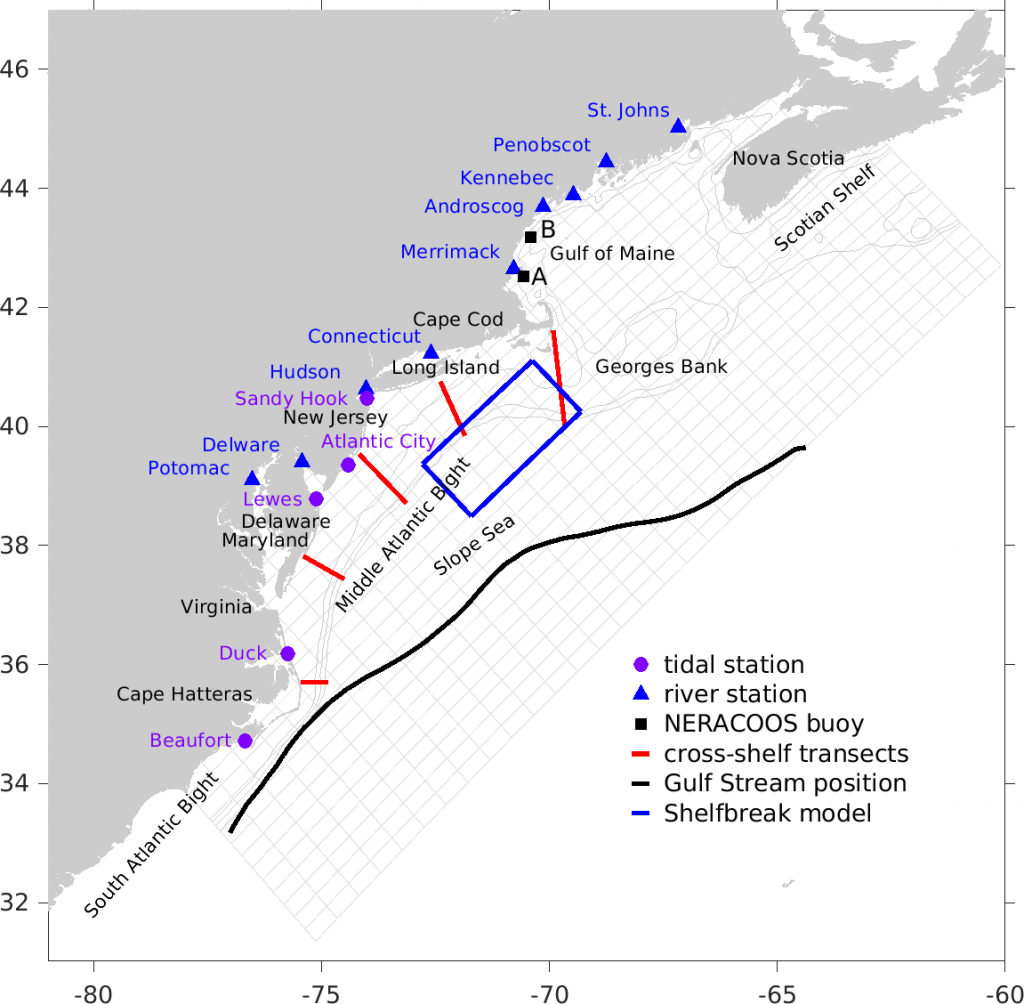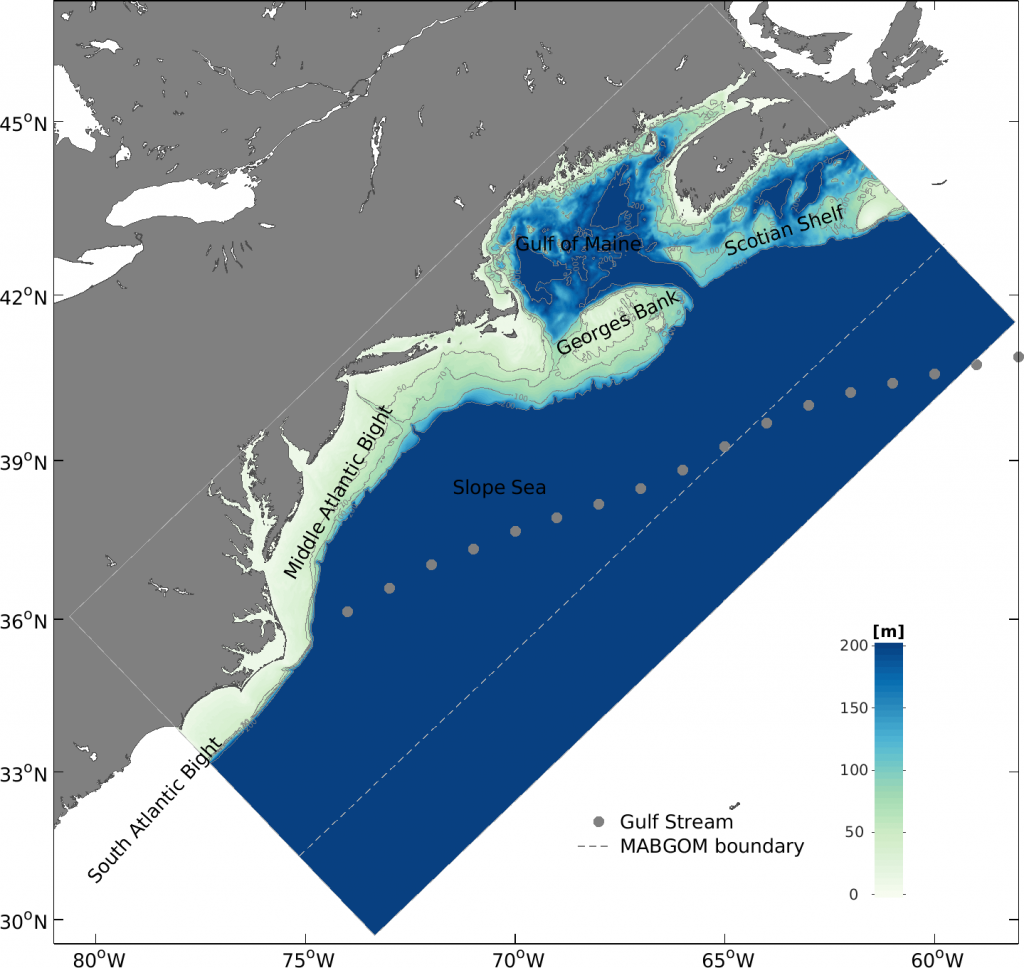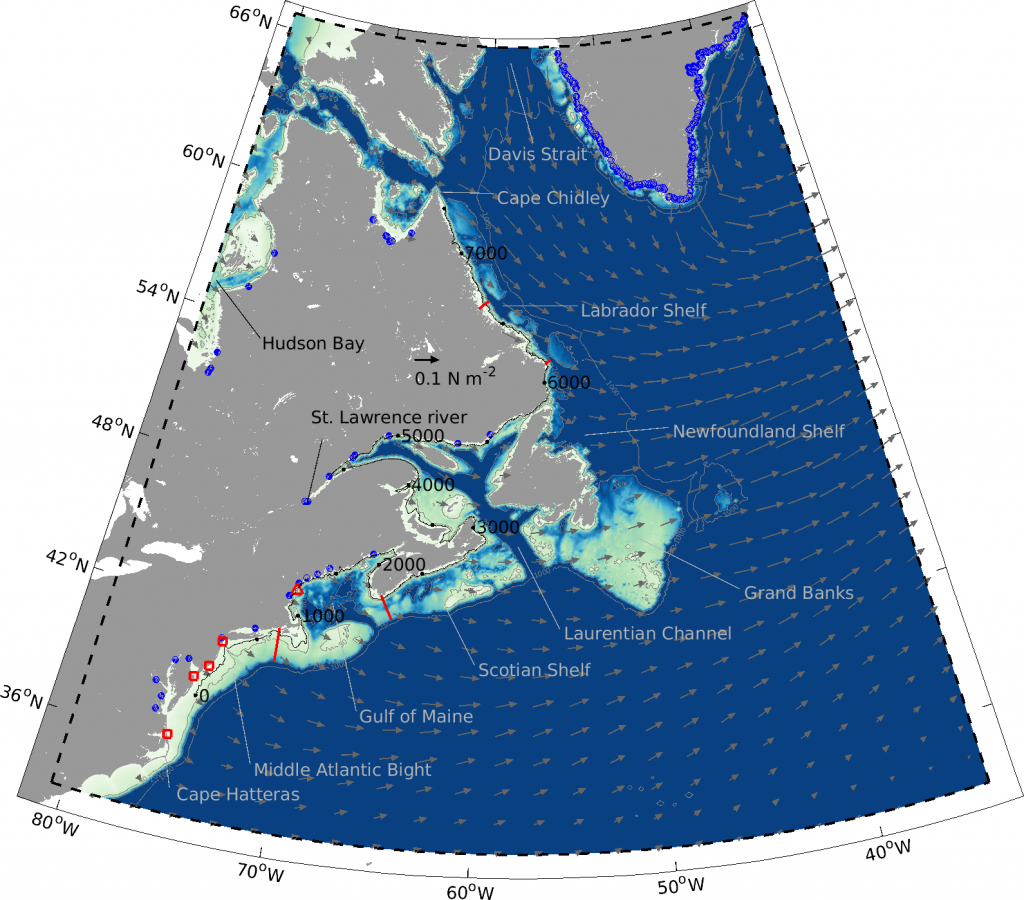To advance fundamental understanding of the ocean and climate system, one approach is to combine numerical models and observations to acquire better understanding beyond what can be achieved by either approach alone. Realistic numerical models, when carefully designed and treated, can fill the gaps in the observations and provide a comprehensive view.

MABGOM model was initially configured in 2007 and was one of the earlier setups of realistic regional models based on Regional Ocean Modeling System (ROMS). The model’s horizontal resolution is 10-km in the along-shelf direction, and 6-km in the cross-shelf direction. Over the years, it has been refined and used for a variety of applications: it has successfully provided open boundary conditions for a higher resolution (1-km) model (Chen and He, 2010) that focuses on MAB shelfbreak processes; it has been coupled with a multi-nutrient, size-structured ecosystem model (Lehmann et al., 2009) to depict the physical-biological interaction processes; and it has been configured with the 4D-Var (4-dimensional variational) data assimilation capabilities (Chen et al., 2014) to investigate the interactions of a Gulf Stream warm-core ring with shelfbreak circulation. MABGOM2 (version 2 of MABGOM model) with 5X finer horizontal resolution was built upon MABGOM and was used to investigate the suitability of slope sea as a spawning ground for bluefin tuna (Rypina et al., 2019; Hernandez et al., 2021).

With a horizontal resolution of 1km, the NESS (Northeast U.S. Shelf and Slope) model is a more recent iteration of the MABGOM/MABGOM2 model. The purpose is to better capture oceanic meso- to submeso-scale processes in the Northwest North Atlantic shelf-slope region, particularly those associated with cross-shelf exchange processes (Chen et al., 2022). The main advantages of the new NESS model are the aforementioned high horizontal resolution and the location of the southeast boundary further offshore, allowing better representations of the slope current, Gulf Stream, and interaction between the two.

The NWA model (Chen and Yang 2024) was configured to improve the understanding of shelf-ocean interaction in the entire Northeast Atlantic sector, which is one of the most dynamically complex regions in the world oceans. Key elements in modeling shelf-ocean interactions in the NW Atlantic include the along-shelf flow, shelfbreak frontal system, shelfbreak exchanges and their associations with complex topography, buoyancy forcing, and wind forcing.